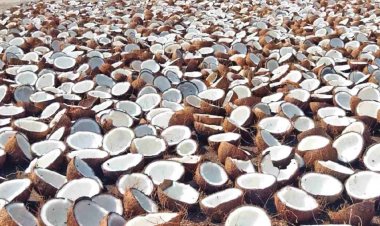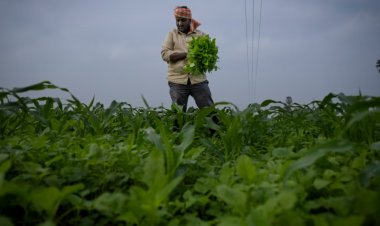How on earth did figures for rice production estimates change within a few hours?
On Friday morning, the Food Ministry said that as paddy had been sown in an area less by 3.806mn ha, the production might go down by 10mn tonnes. Moreover, if the situation worsens further, the decline in production may go up to 12mn tonnes. But in the evening, Sudhanshu Pandey, Secretary, DFPD, said that a loss of 6-7mn tonnes was anticipated in domestic production, but due to good monsoon rains in some pockets, the production loss might reduce to 4-5mn tonnes.

It seems the government is going through uncertainty about rice production, so there is no uniformity in its figures. On Friday morning, the Food Ministry said that as paddy had been sown in an area less by 3.806mn hectares (ha), the production might go down by 10mn tonnes. Moreover, if the situation worsens further, the decline in production may go up to 12mn tonnes. But in the evening, Sudhanshu Pandey, Secretary, Department of Food and Public Distribution (DFPD), said that 6-7mn tonnes loss was anticipated in domestic production, but due to good monsoon rains in some pockets, the production loss might reduce to 4-5mn tonnes. Due to the decline in production and rise in prices in the domestic market, the government on Thursday imposed a customs duty of 20 per cent on non-Basmati rice exports and again on Friday moved broken rice exports from the “free” to the “prohibited” category.
About two weeks earlier, the Central government had released figures of record rice production estimates. Besides, it set a target of a record foodgrain production of 328mn tonnes for the agricultural production season 2022-23. But the very next day, it announced measures to discourage rice exports. Earlier, when Prime Minister Narendra Modi had said in April that India could feed the entire world if WTO allowed doing so, the government had prohibited wheat exports subsequently.
According to the statement released by Food Secretary Pandey, the likely shortfall in area and production of paddy for the Kharif season 2022 is approximately 6 per cent. The final area for Kharif in 2021 was 40.358mn ha. So far, an area of 32.539mn ha has been covered.
The statement says that the domestic prices of rice are showing an increasing trend. Besides, this may continue to increase due to low production forecast by about 10mn tonnes of paddy and an 11 per cent increase in export of non-Basmati compared to the corresponding period of last year. However, he also says that India is still surplus in rice production.
Read… Govt prohibits exports of broken rice
https://eng.ruralvoice.in/latest-news-24/govt-prohibits-exports-of-broken-rice.html
Besides a rise in prices, the statement gives two other reasons for the prohibition of exports of broken rice. It says that sugar-based feedstocks alone cannot meet the requirements of 11bn litres of ethanol for 20 per cent ethanol blending by 2025. Since Ethanol Season Year (ESY) 2018-19, India has allowed grain-based ethanol, and in ESY 2020-21, it also allowed the Food Corporation of India (FCI) to sell broken rice to ethanol plants for fuel ethanol production. However, in the current ESY 2021-22, against the contracted quantity of 360mn litres, only about 163.6mn litres has been supplied by distilleries up to August 21 due to the low availability of broken rice for ethanol production.
The impact on the poultry sector has been cited as another reason. According to the statement, the domestic price of broken rice, which was about Rs 16 per kg in the open market, has increased to about Rs 22 per kg in states because of exports due to higher international prices. The poultry sector and the animal husbandry farmers were impacted the most due to the price hike of feed ingredients. About 60-65 per cent of the cost of inputs for poultry feed comes from broken rice. Any increase in prices will be reflected in products like milk, egg and meat.
Read… Decision to impose 20 per cent export duty on non-Basmati rice to rein in domestic prices



 Join the RuralVoice whatsapp group
Join the RuralVoice whatsapp group









































